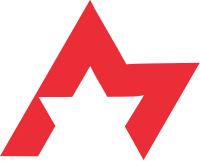Canadian units

In Canada, we use special measurements to tell us how big or small things are, as well as how much they weigh. These are called Canadian units, and they're different from the units used in other countries like the United States or the United Kingdom.
One example of a Canadian unit is the metric system, which is based on units of ten. This means that when we count things, we use numbers like 10, 100, or 1000 instead of 12 or 16 like they might do in other places. It makes it easier to do math and conversions between different measurements.
For example, if you want to measure how tall someone is, you would use centimeters (cm). A person who is 150 cm tall is shorter than someone who is 180 cm tall. If you wanted to convert centimeters to feet (a unit of measurement used in the US), you would use a special conversion formula.
We also use Canadian units to measure weight, like kilograms (kg) instead of pounds (lbs). A kilogram is similar to a liter of water in terms of its weight, while a pound is closer to half a kilogram.
So, in short, Canadian units are the way we measure things in Canada using special measurements like the metric system to make it easier to count and measure things.
One example of a Canadian unit is the metric system, which is based on units of ten. This means that when we count things, we use numbers like 10, 100, or 1000 instead of 12 or 16 like they might do in other places. It makes it easier to do math and conversions between different measurements.
For example, if you want to measure how tall someone is, you would use centimeters (cm). A person who is 150 cm tall is shorter than someone who is 180 cm tall. If you wanted to convert centimeters to feet (a unit of measurement used in the US), you would use a special conversion formula.
We also use Canadian units to measure weight, like kilograms (kg) instead of pounds (lbs). A kilogram is similar to a liter of water in terms of its weight, while a pound is closer to half a kilogram.
So, in short, Canadian units are the way we measure things in Canada using special measurements like the metric system to make it easier to count and measure things.
Related topics others have asked about:
